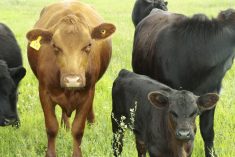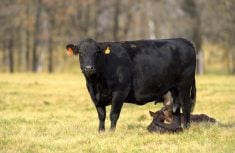I recently had the opportunity to do a series of producer meetings in southern Alberta and was reminded about the important role that technology such as growth implants and feed additives play in our industry. In light of the marketing hype that some national chains are using to influence the consumer’s perception about the wholesomeness of Canadian beef, I think it is important that we remind ourselves and consumers that these products, when used according to Canadian Food Inspection Agency regulations, are safe and effective tools for efficient production of beef in an environmentally sustainable manner.
Read Also

What to know before you go to Agribition 2025
If you’re attending Agribition 2025, this is the place to find out about tickets, dates and what’s happening this year.
Take, for example, the class of feed additives known as ionophores. These are a special category of antibiotics that can be used in both the cow-calf and feedlot sectors. There are three products currently registered for use in Canada. These include lasalocid sodium, monensin sodium and salinomycin sodium. Originally marketed for control of coccidiosis in poultry, these products were found to have similar biological activity in beef cattle. Coccidiosis is a protozoa infection of the lower gut, typically seen in young animals, particularly those that are under stress (i.e. weaning, shipping and mixing). The protozoa that cause this disease have a unique life cycle that includes an oocyst stage that occurs outside the animal and both asexual and sexual reproductive stages that occur within the small and large intestine of the animal. Calves are infected when they ingest oocytes that have been shed in the manure of infected animals. Severely infected animals can develop a watery diarrhea that may or may not be discoloured with blood. Other symptoms include depression, dehydration, weight loss and even death. In less severe cases, cattle tolerate the infection and develop immunity. However, growth and feed efficiency can be adversely affected. Ionophores work by interfering with the normal cell function of the protozoa that cause this disease. As their name suggests, they interfere with ion exchange across cell membranes and by so doing, hinder the growth and reproduction of the protozoa causing the infection. Both lasalocid sodium and monensin sodium are registered for coccidiosis control in Canada, monsensin sodium at 22 milligrams per kilogram (ppm) of diet dry matter, lasalocid at 36 milligrams per kilogram of diet dry matter.
- More ‘Nutrition’ with John McKinnon: Strategic protein supplementation
Control of coccidiosis is only one of the many benefits that ionophores provide to beef cattle operations. They are also registered at inclusion levels that may or may not be the same as for coccidiosis control for improvement of weight gain and/or feed efficiency. Cattle fed ionophores typically eat less feed while gaining the same or slightly better than non-ionophore-fed counterparts. It is not uncommon to see feed efficiency improve by five to 10 per cent when these products are fed at approved levels. To understand how ionophores influence feed efficiency, one needs to examine the nature of rumen bacteria. There are two broad classes of rumen bacteria; these include those classified as gram positive and gram negative. When rumen bacteria ferment feed, they produce fermentation gases such as acetate, propionate, butyrate, lactate and methane. Without going into detail, gram positive bacteria are less efficient at fermenting feed than gram negative bacteria. Specifically, they produce more acetate and methane than gram negative bacteria. Methane and the energy it contains are lost to the environment when the animal belches. In contrast, gram negative bacteria produce more propionate during rumen fermentation which results in more feed energy being available for use by the animal. Feeding an ionophore such as monensin promotes the growth of gram negative and hinders the growth of gram positive bacteria. The result is a shift in the rumen microbial population and a more desirable rumen fermentation pattern, particularly in terms of feed energy capture. The result is less feed for the same gain and, as a result, improved feed efficiency.
The shift in rumen bacterial population also has implications for control of rumen acidosis. For example, when cattle are fed high-grain diets, specific species of gram positive bacteria will produce lactic acid, which can accumulate in the rumen and lead to digestive disturbances such as acidosis. In contrast, under the same conditions, specific species of gram negative bacteria utilize lactic acid. By shifting the balance towards more gram negative bacteria, ionophores help to minimize the buildup of lactic acid and to control fluctuations in rumen pH. While not a label claim, studies have shown that monensin-fed cattle are more stable in terms of their eating patterns and as a result are less prone to digestive disturbances and off-feed related issues. Specific ionophores (i.e. monensin sodium) are also used to help reduce the incidence of bloat and bloat-related mortalities in growing cattle grazing legume pastures. In this case, a slow-release rumen bolus is used to deliver the designated dosage.
One could go on, but it is fair to say that technology such as ionophores are an essential component of modern beef production. Their use prevents disease, improves feed efficiency and reduces greenhouse gas emissions. Why as an industry we have to defend their use is perplexing, particularly when those who suggest subliminally or otherwise, that beef produced with such technology is somehow tainted are in the same business as the rest of us — that is producing and marketing high-quality Canadian beef!

















